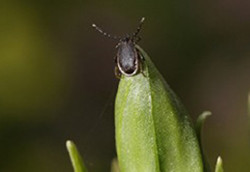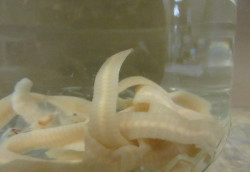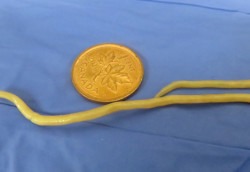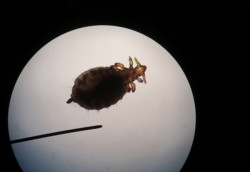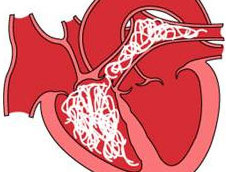INTERNAL PARASITES
Roundworms
Symptoms: weight loss, potbellied appearance, weakness, and occasionally decreased appetite, vomiting or diarrhea. Once a dog is infected it continuously pollutes any area that it is in contact with. This can result in infection of other dogs or people. REMEMBER roundworms do pose a health risk to people. Children and immune-compromised people are at greatest risk of infection. Regular poop scooping is the most effective means of preventing roundworm contamination along with regular deworming.
Tapeworms
Symptoms: similar to roundworms. You may see tapeworm segments in feces that look like grains of rice. Tapeworms are transmitted by a host, such as mice, fish, deer, fleas, etc. In order to get a tapeworm the dog must either ingest a flea (licking themselves) or a contaminated animal (mice, rats, deer). Tapeworms can be up to 8 inches long and their segments are excreted in the dog’s feces. People can become infected by these segments (children are particularly at risk due to poor hand washing habits). Flea control, deworming, preventing rodent and wild meat contact, and regular poop scooping are the best way to prevent tapeworms.
Hookworms
Symptoms: pale gums, bloody diarrhea, weakness, weight loss, and failure to grow. Skin itching may occur as larvae can burrow into the skin. Hookworms attach to the intestinal wall and suck large amounts of blood from the vessels. Because of this, a large amount of hookworms can cause anemia. Adult hookworms do not infect humans; however, the larvae can burrow into the skin and cause problems.
EXTERNAL PARASITES
Lice
Lice are white in colour and very small; they are just visible to the naked eye. They are flattened and do not have wings. Lice live on the host continuously and infect other animals by direct contact. Eggs are fastened to the host’s hair. There are two types of lice: biting and sucking. It is important to determine which type of lice an animal has, as they treatments for each if different.
Fleas
Fleas are brownish-red in colour and are visible to the naked eye. They are flattened and have prominently enlarged third pair of legs. Once a dog has been infested, it is not only important to treat the dog, but also to clean and vacuum everywhere the infested dog or cat has been, as well as wash their bedding. Adult fleas can live for a couple months without food.
Fleas and lice can be prevented with a topical ointment. Prevention will always be easier than treatment.
Mites
Mites are quite small. They are host-specific and live on the animal continuously. They are transmitted to others by direct contact. Skin scraping and a microscope may be necessary for diagnosis.






